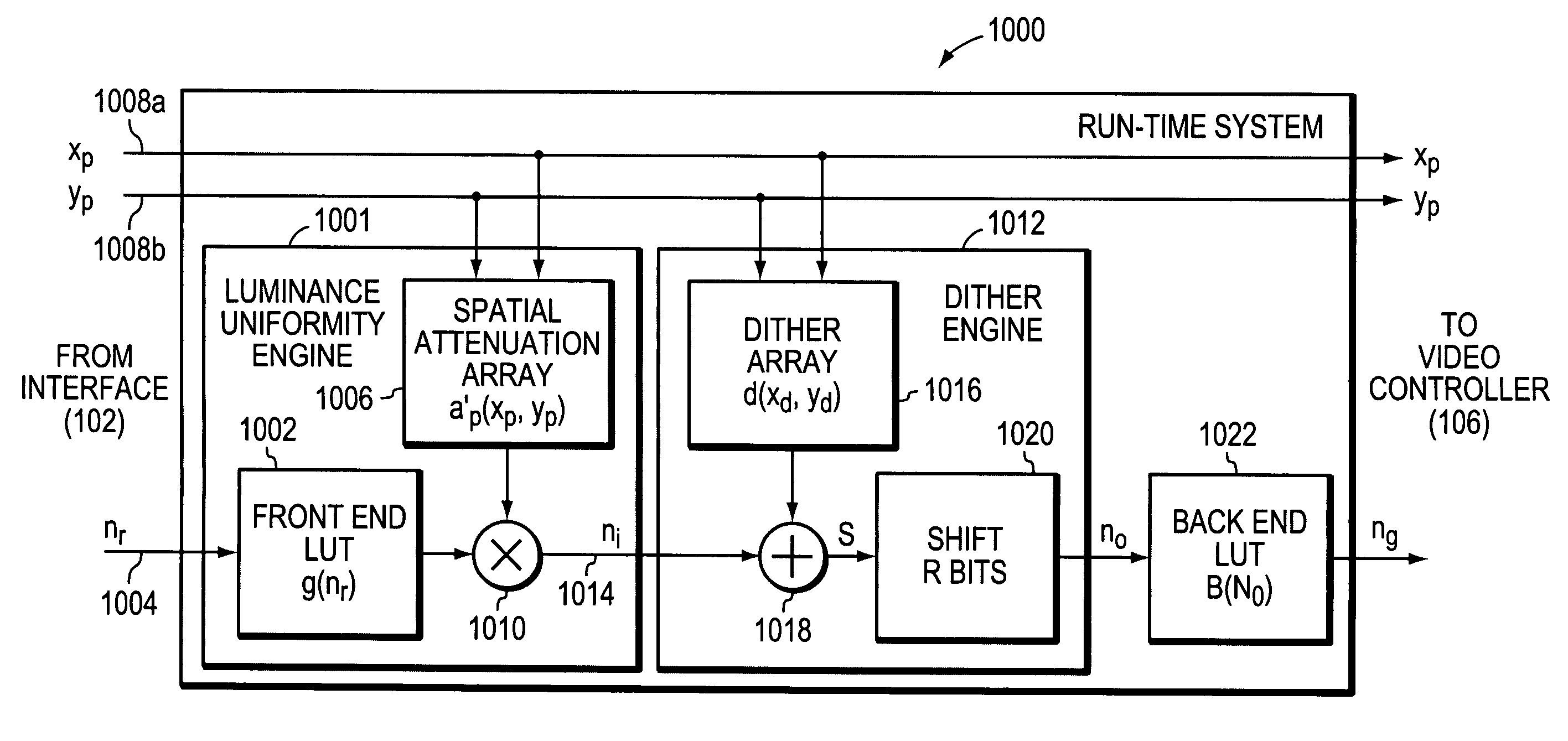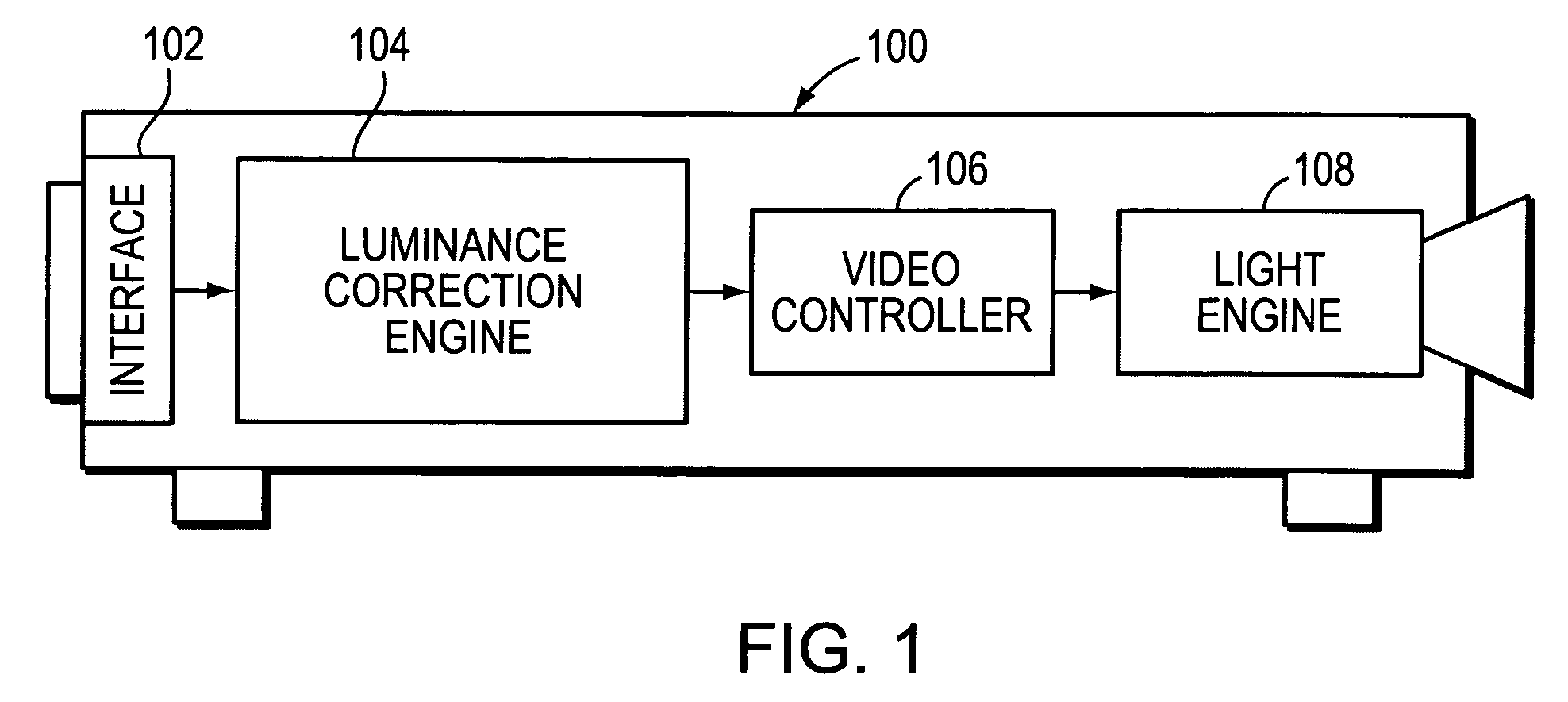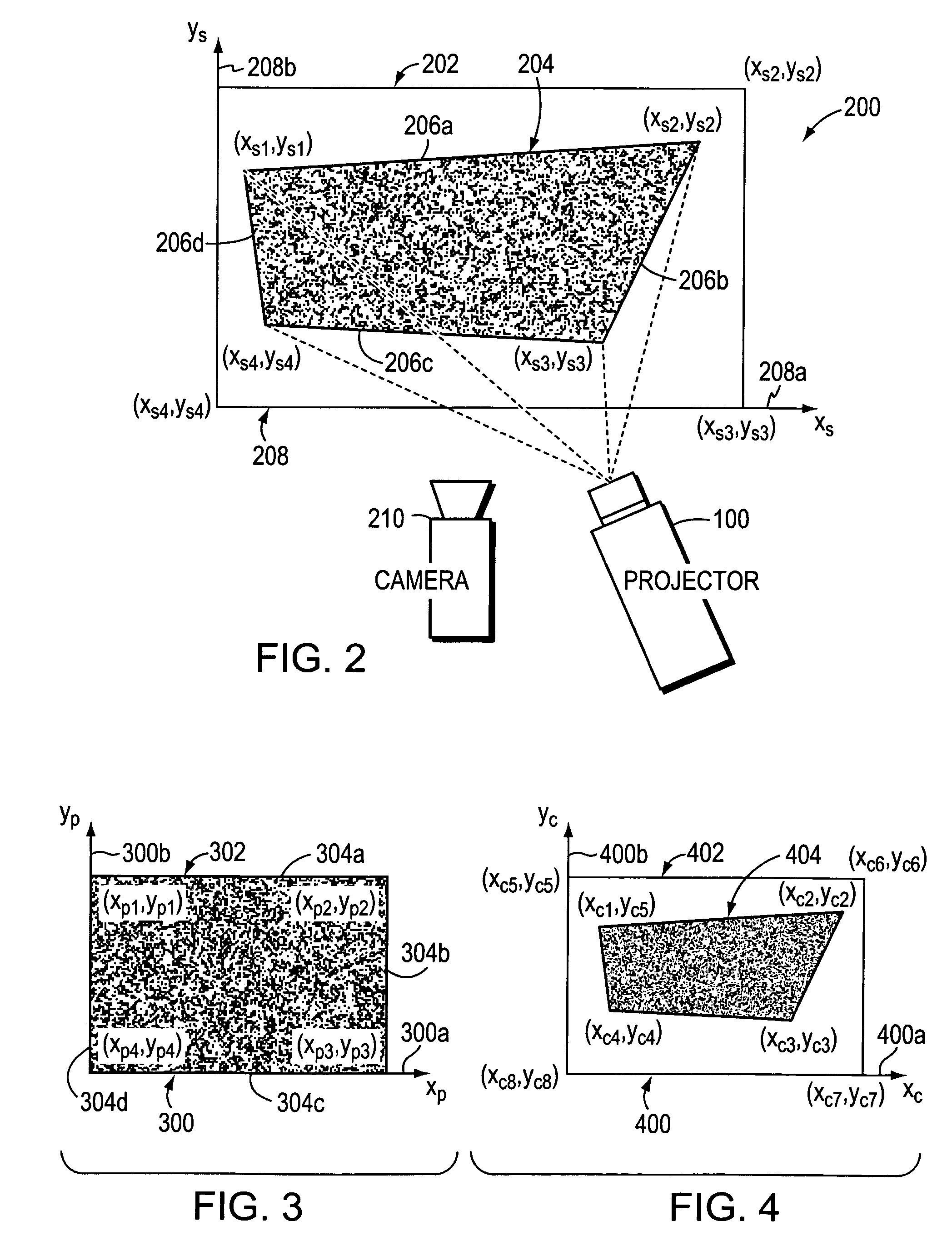System and method for correcting luminance non-uniformity of obliquely projected images
a technology of luminance and non-uniformity, applied in the field of electronic imaging systems, can solve problems such as the mechanism does not, however, correct for the non-uniformity of luminance, and projected images also suffer from luminance or brightness variations,
- Summary
- Abstract
- Description
- Claims
- Application Information
AI Technical Summary
Benefits of technology
Problems solved by technology
Method used
Image
Examples
first embodiment
[0025]In order to generate a mapping between the screen coordinate system 208 and the projector coordinate system 300, a camera 210 (FIG. 2) is used to capture and record the geometry of the screen image 204. In the present invention, the camera 210 is positioned such that its optical axis (not shown) is perpendicular to the screen 202 in all planes. As with the screen 202 and the projector 100, a camera coordinate system is also generated, at least logically.
[0026]FIG. 4 is a highly schematic illustration of a camera coordinate system 400 that includes an x-axis, xc, 400a and a y-axis, yc, 400b. Defined within the camera coordinate system 400 is an image of the screen 402 as captured by the camera 210. Within the camera-screen image 402 is a camera-projection image 404 of the screen image 204 (FIG. 2) generated by the projector 100. Because the camera 210 has been positioned such that its optical axis is perpendicular to the screen 202 in all planes, the screen and camera coordinat...
second embodiment
[0080]FIG. 9 is a highly schematic illustration of a run-time system 900 in accordance with this second embodiment of the system. Run-time system 900 includes a front end look-up table (LUT) 902 that receives uncorrected input levels from interface 102 (FIG. 1) as indicated by arrow 904. Run-time system 900 further includes a spatial attenuation array 906 that receives the pixel addresses, in projector space, i.e., xp, yp, corresponding to the respective input levels being supplied to the front end LUT 902, as indicated by arrow 908. The run-time system 900 also includes multiplier logic 910 that receives the output of the front end LUT 902 and the spatial attenuation array 906 for each input level / x,y coordinate pair. The multiplier logic 910 multiplies those outputs together and the resulting “corrected” input level is supplied eventually to the light engine 108 along with the corresponding pixel address information, as indicated by arrows 912 and 914, respectively.
[0081]The atten...
third embodiment
[0083]FIG. 10 is a highly schematic illustration of a run-time system 1000 in accordance with this third embodiment of the system. Run-time system 1000 includes a luminance uniformity engine 1001, a dither engine 1012 and a back-end look-up table 1022 that cooperate to process input image information so that the resulting image generated by projector 100 (FIG. 1) is uniform in luminance and appears to have been produced from a greater number of levels than the number of unique levels that the projector 100 is capable of producing. The luminance uniformity engine 1001 includes a front end look-up table (LUT) 1002 that receives an uncorrected, raw input level, nr, from interface 102, as indicated by arrow 1004, and a spatial attenuation array 1006 that receives the pixel addresses, in projector space, i.e., xp, yp, as indicated by arrows 1008a–b, corresponding to the respective raw, input level nr, received at the front end LUT 1002. Luminance uniformity engine 1001 further includes m...
PUM
 Login to View More
Login to View More Abstract
Description
Claims
Application Information
 Login to View More
Login to View More - R&D
- Intellectual Property
- Life Sciences
- Materials
- Tech Scout
- Unparalleled Data Quality
- Higher Quality Content
- 60% Fewer Hallucinations
Browse by: Latest US Patents, China's latest patents, Technical Efficacy Thesaurus, Application Domain, Technology Topic, Popular Technical Reports.
© 2025 PatSnap. All rights reserved.Legal|Privacy policy|Modern Slavery Act Transparency Statement|Sitemap|About US| Contact US: help@patsnap.com



